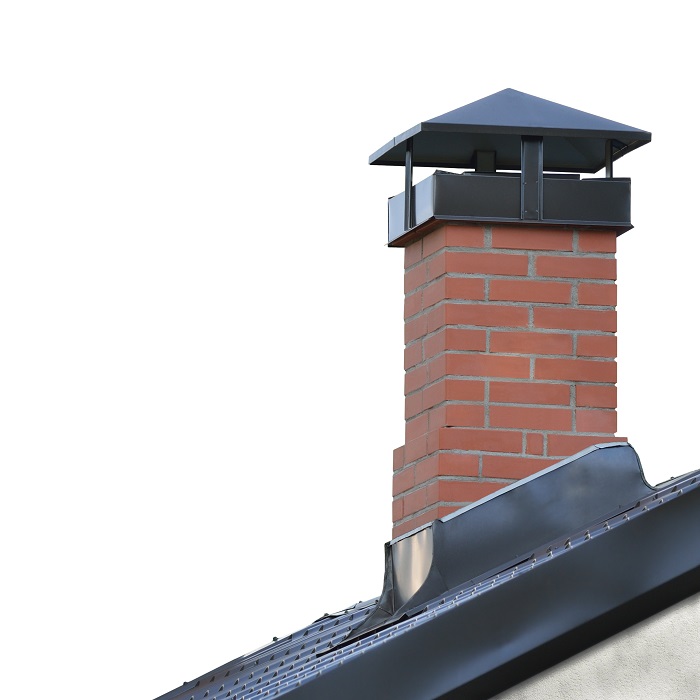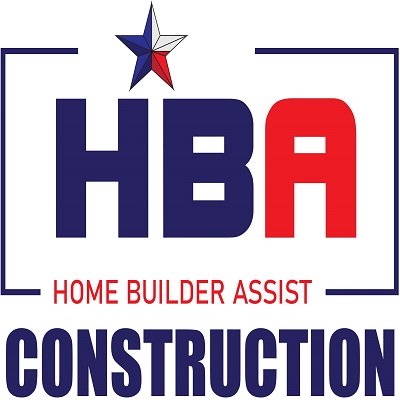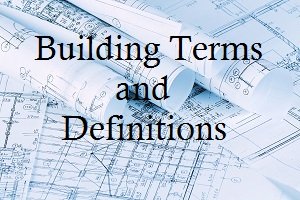Types of Chimneys,
Chimney Liners and Waterproofing

There are two main types of chimneys: masonry chimneys built from stone and mortar, bricks, or blocks, and prefabricated metal chimneys. While brick chimneys are the most typical installation in a home, metal chimneys can be designed to reflect the homeowner’s style.
Masonry Chimneys
Like masonry fireplaces, these types of chimneys are constructed from bricks, blocks, or stone and mortar. They can be constructed in a frame as thin as a single brick, or for increased safety, of multiple layers of bricks, blocks, or stone. Regardless of the thickness of the frame, consider adding a chimney liner to support and protect your chimney.
Metal Chimneys
Typically either double- or triple-walled, metal chimneys can be enclosed within a masonry chimney chase, wooden structure, or sided frame for aesthetic purposes. A double-wall construction contains insulation between the walls, while a triple-wall construction allows air between the layers to either dissipate heat (air-cooled chimneys) or provide insulation (air-insulated type of chimneys).
Before installing a metal chimney, be sure to check with the manufacturer of your fireplace to make sure that they will operate safely with one another.
Liners for the 2 Types of Chimneys
Chimney liners serve several purposes. Not only do they protect the house from heat transfer to combustibles, they protect the masonry from the bi-products of combustion that can cause corrosion.
All local building codes require the use of chimney liners for the safe and proper venting of a fireplace. There are three main types of liners: 1. clay tile, 2. metal and 3. cast-in-place.
- Many chimneys lined with clay liners and mortar do not allow for long lasting use. Any cracks in the tile, gaps in the mortar joints or fallen out mortar can result in serious problems to the functionality and safety of your chimney. The allowance of smoke and embers making their way through your liner could result in a fire. This can also cause draft problems and the possibility of a smoky smell in your home. Using a stainless steel flex liner eliminates the problems that can come from a traditional clay liner flue.
- The type of metal chimney liner you need depends on your fireplace. Aluminum liners should only be used in tandem with gas appliances that specify an aluminum venting system, but stainless steel liners work equally well on gas fireplaces, traditional fireplaces and wood burning stoves.
- Cast-in-place liners provide interior structural support for chimneys as lightweight, cement casts that are installed on-site.
Chimney Waterproofing
Because the two types of chimneys stand above the roof line, they are extremely vulnerable to the elements, and nearly every chimney will get visible signs of weathering. To stop the effects of weathering, waterproof it. This will keep water from permeating the masonry on the two types of chimneys.
Although most are made of brick, concrete block and stone chimneys require slightly different treatment. First, you must understand what kind of damage can result from water penetration, as well as what kinds of waterproofing products exist and how they work:
WATER DAMAGE
The brick on your chimney is held together with mortar, which is extremely porous. It often takes in water and can crack or erode as it swells and contracts—especially during the winter months. This can be dangerous to the structure of your chimney.
Spalling brick is quite common and can result in an entire re-building of the chimney structure. You can tell this is occurring when the faces of the brick flake and pop off.
If you see white salt that is built-up on the surface of the bricks, efflorescence has occurred. This happens after internal water has evaporated, and salt is left behind to coat the porous surface.
When water makes its way inside your chimney, the metal that provides internal structural support can corrode and rust. Before waterproofing, you may want an inspection to ensure there is no other damage like this. It will require extensive repair or rebuilding.
WATERPROOFING PRODUCTS
It is enticing to spend less money on inexpensive waterproofing products. The fact of the matter is, the more expensive a product is, the more effective it will be. Waterproofing material will break down when it is exposed to UV rays, so a high-quality product is the best way to prolong the effects of the waterproofing job.
Waterproofing products are normally made out of polysiloxanes or silanes. These chemicals create an electrostatic charge that becomes a barrier to prevent any water penetration. It is also vapor permeable. This means that the vapor created when you ignite your fireplace below can escape properly. Otherwise, it will build up and create structural damage, such as metal corrosion or crumbling of brick.
ChimneySaver is one brand that is used to combat this problem. It is able to do all that is described above: it reduces water penetration and is designed to expel water vapors that may pass through the bricks when the chimney is in use. It’s almost like a “skin” of sorts. Breathable but effective, it doesn’t trap water, but expels it away from the porous masonry.
Chimney-Saver is available in both solvent (mineral spirits) and water-based formulas. The water-based formula is most popular and less expensive. However, because solvent-based formula soaks-in deeper, it is recommended for future re-applications.
CHIMNEY CROWN AND BREAST
The chimney breast does not go straight to the ground, but around structures like fireplaces. Because it lies at an angle, it can be exposed to the elements more easily. Therefore, a solvent-based product is typically used.
The chimney crown is made of concrete or mortar and is extremely porous. Its place at the top of the chimney makes it vulnerable to snow and rain. Cracks in the structure should be caulked, and the application of the waterproofing product must be done while the crown is wet. This will ensure the formation of a tight bond between the materials.
NON-BRICK TYPES OF CHIMNEYS
Concrete block chimneys are the most porous and in danger to water damage. More than one coat of waterproofing product is necessary. Additionally, instead of a water or solvent-based product, a solid-based treatment is preferred. This can come in the form of stucco or waterproof paint. ChimneySaver has special products for these situations.
There is a reason stucco can be used while waterproofing concrete block chimneys: Stucco does a fair job at repelling water as is. It does not require the extensive waterproofing that brick, concrete, or stone chimneys do.
Most stone chimneys do not work well with the chemicals in traditional waterproofing products and do not form the bonds necessary to repel water. A different product will need to be used.
For more information on types of chimneys and their basic repairs, read:
10 Chimney Basics Every Homeowner Needs to Know- by Freshome



